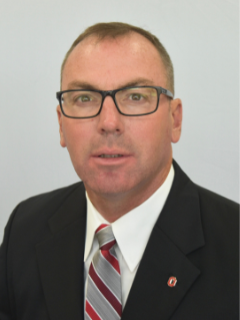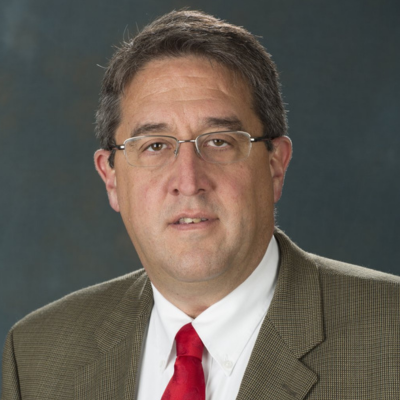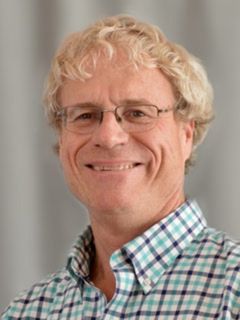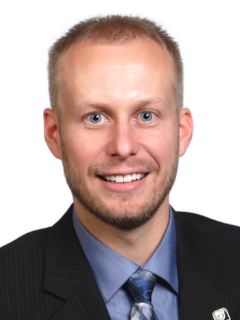
Date: Tue Jun 26, 2018
Time: 10:00 AM - 11:45 AM
Moderator: John Fulton
SEGES is owned by the Danish farmers and is an agricultural advisory centre advising landowners with a total of 2.1 mill hectare. One of SEGES’s goals is to make precision farming mainstream. One step in the process of making precision farming mainstream was in 2016 to give all farmers access to the free internet application CropSAT.dk. Here farmers can make variable rate application (VRA) maps based on satellite data from Sentinel-2. But this is not enough to make precision farming mainstream because a barrier for the farmer was to type in the amount of nitrogen in five levels, so a nitrogen model for winter rape was implemented in CropSAT. Still, only farmers interested in precision farming were reached and the goal was all farmers. Then the idea of pushing out all VRA maps for winter rape came up. To do this you have to have a site on the internet used by all farmers. SEGES has a platform like this where 2,000 unique users visit every day. Now, the farmer is showed all his winter rape fields with variable rate nitrogen. In 2017 SEGES pushed out 7,000 VRA winter rape maps. In 2018 SEGES has pushed out 12,000 VRA maps on winter rape and 70,000 on winter wheat fields.
Canola production in the Canadian Prairies varies considerably within and between producer's fields. This study describes the variability of crop yield in producer's fields in the context of terrain attributes, and in relation to fertilizer rates in management zones determined from historical yield. Canola yield data were collected for 27 fields in Alberta, Saskatchewan and Manitoba Canada in 2014, 2015, 2016 and 2017. Several terrain attributes accounted for a considerable proportion of canola yield in gradient boosted tree analyses, in combined analyses of all fields. Terrain attributes, such as elevation, accounted for more variability in canola yield, relative to management zones and fertilizer treatments. Analyses of management zones for fertilizer management of crop yield within zones had the best statistical fit when conducted with fields as a factor in statistical analyses. In analyses with fields included as a factor in the linear mixed model, significant differences were observed for canola production between historically low and high yielding zones, and in contrasts between the control with no N fertilizer and treatments with 50, 100 and 150 % of fertilizer applied based on soil test recommendations.
Broadcast fertilizer distribution through spinner-disc spreaders remain the most cost-effective, and least time consuming process to apply the needed soil amendments for the next crop. Spreaders currently available to producers enable them to apply a variety of granular products at varying rates, blends, and swath widths. In order to uniformly apply granular fertilizer or lime, the spreader should be calibrated by standard pan testing with any change in spreader settings, application rate, or fertilizer source. Improper or lack of calibration can result in nutrient “streaking” across the field, which is undesirable because it induces variability in crop fertility levels. The standard pan testing process includes a cumbersome technique of measuring the mass of fertilizer particles collected in each pan. Often, due to time restrictions operators cannot or choose not to calibrate their spinner-disc spreaders. An accurate and time efficient way to measure the spread pattern is required to ensure that proper calibration procedures are being adopted at an acceptable rate. Using image processing techniques, a user friendly application for graphical user interface was developed to assess the spread pattern uniformity of commercial-scale, spinner-disc spreaders. In this app, the operator captures an image of the fertilizer particles in each collection pan. Images are then analyzed in order to detect the blend of fertilizer and to quantify mass of applied fertilizer particles in the collection pan. Data from image analysis for each of the pans is then aggregated and combined with inputs from the user to generate an observed application rate across the swath and a spread pattern uniformity assessment. Results prove that the image based application is just as accurate as traditional pan testing, but less time consuming. Overall, this app will encourage calibration of spreaders while simultaneously reducing time and labor costs of operation.


Soil available nutrients are the key determinants in crop growth, field stable output and ecological balance. The soil nutrients loss and surplus can strongly influence the stability of field ecological environment and cause unnecessary pollution. Hence, optimizing the status of soil available nutrients status has significant ecological and economic significance. With the advancement of mechanized farming and control technologies, soil available nutrients can be optimize by variable rate fertilization. The effective and stable soil available nutrients variation simulation of the entire region in a large time-span is necessary before the corresponding control measures can be applied. However, the base soil available nutrients are usually variable between and within growth season, making common methods impossible to simulate the temporal and spatial variation with the required precision. Thus in this study, we introduce a new method to map soil available nutrients by integrating the crop model and time series remote sensing data. We select the World Food Studies (WOFOST) and time series HJ-1 CCD data to retrieve the soil available nutrients variation in Shuangshan farm, Northeast China. And the spatial heterogeneity can be effectively estimated within the growth season. Because the farm is implementing uniform fertilization management through last 5 years, the temporal variation can also be simulated using transformation algorithms. The soil available nutrients contents were simulated and analyzed in two ways. Firstly, we applied the simulation method to the study area in recent five years to monitor the inter-annual variation and analyzed the variation inducement. The results indicated that crop growth and precipitation intensity can both bring variations between years and plots. The within-year variation was also analyzed by estimating the soil available nutrients contents of the whole growth season with the step of five days which showed that the nutrients contents presented downtrend basically while the variation can be quite different among plots. In general, the temporal and spatial variation of soil available nutrients under uniform fertilization condition can be simulated with high stability and accuracy. Appropriate fertilization measures can also be developed to protect field ecological environment based on the analysis of simulation results.
To minimize ammonia (NH3) volatilization and nitrous oxide (N2O) emissions from fall applied fertilizer, it is generally recommended to not apply the fertilizer until the soil temperature decreases below 10 C. However, this recommendation is not based on detailed measurements of NH3and N2O emissions. The objective of this study was to determine the influence of fertilizer application timing on nitrous oxide, carbon dioxide, and ammonia volatilization emissions. Nitrogen fertilizer was applied at two rates (0 and 224 kg urea-N ha-1) to two soil moisture treatments (natural rainfall and natural + supplemental water) in mid-September, mid-October, and the beginning of November. Soil temperatures at fertilizer application were approximately 27 C, 16 C, and 5 C, in September, October, and November, respectively. Gas flux rates of N2O, CO2, and NH3were monitored every 4 hours for 3 weeks following application. As the season progressed from September to November, CO2and N2O emissions decreased. However, for ammonia, different results were observed and rates increased from September to October, however, emissions decreased thereafter. At the end of the November application, CO2, N2O, and NH3emissions were very low. These findings suggest that minimizing NH3and N2O losses requires a better understanding of the loss mechanisms.
Researchers working on a USDA-sponsored research project are currently conducting approximately one hundred large-scale, on-farm agronomic field trials in seven countries and seven US states. Each experiment randomizes input application rates on full fields no less than 35 hectares in area. The methodology of their experiments is to use precision technology to design and conduct the trials; farmers can implement the trials with very little bother. Previous studies of the economic value of variable rate application technology have always assumed farmers have perfect knowledge about yield response functions at the sub-plot level within a field. This article relaxes this assumption and recognizes the economic value of gaining information about yield response through on-farm agronomic experiments.
We report results of Monte Carlo simulations to begin to gauge the practicality of this idea of using precision technology to increase the information needed to increase the demand for precision technology. We begin by using the APSIM crop growth model to simulate crop growth on cornfields in the US Midwest. The APSIM field characteristics matrix parameters are derived from soil samples taken on an actual Illinois cornfield. Simulated data on daily weather events are taken from historical weather data for the field’s county. We simulate trials by dividing the field into a grid of plots of sizes consistent with the plot sizes in the actual USDA-sponsored trials, and assigning randomizing nitrogen fertilizer and seeding rates to each plot. Then we conduct an APSIM simulation in each plot in each “year” of the experiment. Having generated simulated field trial data, we then use spatial econometric methods to estimate reduced-form yield response functions with simulated data. The econometric analyses provide “information,” which when statistically and economically analyzed can be used to provide farmers with profitable input management recommendations. Increasing the number of years of experimentation improves how well the estimated reduced yield response function mimics the actual outcomes of the APSIM model. These procedures allow us to assign economic costs and benefits to the experiments. Key simulation results were: (1) By using site-specific variable rate technology instead of uniform rate technology, a farmer who knew the true response function of every block in his/her field could expect to be able to increase annual net revenues by approximately two dollars per hectare. (2) Information about yield response functions was worth much less to the uniform rate farmer than to a site-specific farmer. (3) For the farmer with only partial information (anywhere from four to thirty years of field trial data), net revenues were higher under uniform technology than under site-specific technology, even when the differences in the costs of production under these technologies were not accounted for.

Potatoes are a high value cash crop, which relies heavily on agrochemicals. Currently, crop management practices are implemented uniformly with inadequate attention being given to the spatial variability in soil properties and tuber yield which not only increases the production cost but also adversely affects the tuber yield, quality and environment. This study was designed to characterize and quantify the spatial variation in soil properties and tuber yield and to delineate management zones for site-specific fertilization. Two fields were selected, and a grid pattern was established at experimental sites to collect soil and yield samples. Soil samples were analyzed for nitrogen, phosphorous, potassium, pH, electrical conductivity, texture, and soil organic matter. The volumetric moisture content and ground conductivity data were also recorded at the same grid points. The location of the sampling points and field boundaries were marked with a global positioning system.
The cluster analysis was performed to group the soil and tuber yield data into five zones termed as 'very poor,' 'poor,' 'medium,' 'good,' and 'very good' without prior knowledge of productivity potential with the internal homogeneity and external heterogeneity at a similarity level of greater than 70%. The coefficient of variation, geo-statistical range of influence, and kriged maps were generated to analyze spatial variations within selected sites. Correlations matrix were developed to identify the yield limiting factors and their prediction potential was assessed via sensors. The means were compared in delineated management zones using least significant difference method to examine the practicality of the developed management zones. Detailed results will be presented at the conference.

